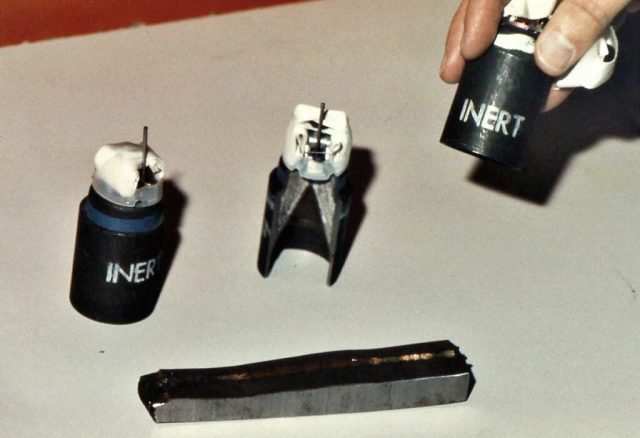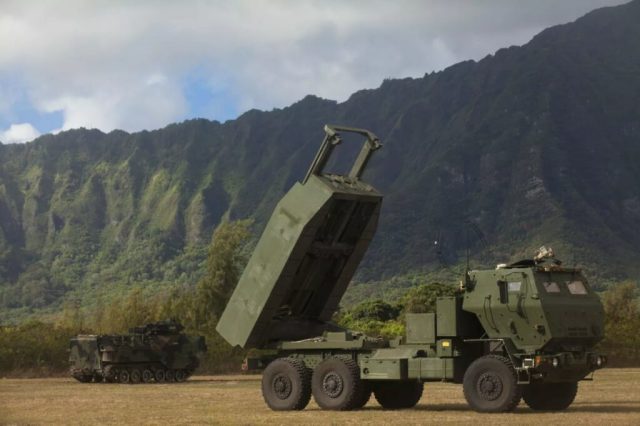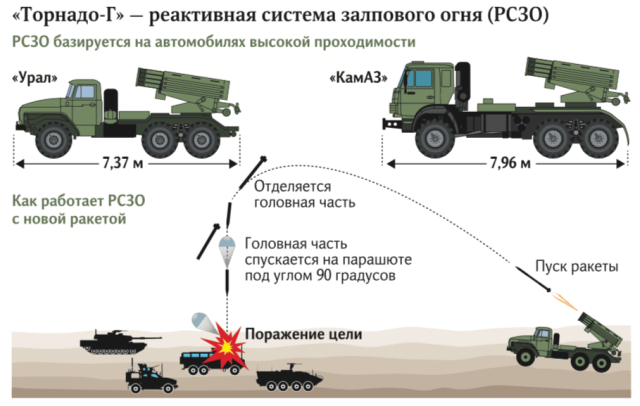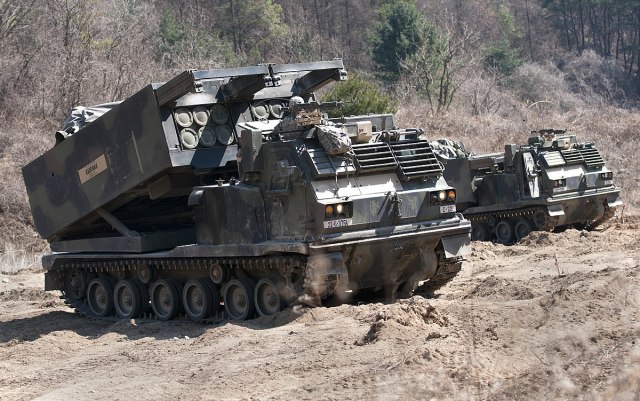According to American President Joe Biden, it will not be able to reach Russian territory, but military-technical analysis shows that this is not the case. The Pentagon, apparently, is still hesitating.
Yesterday, on May 30, 2022, the US president said : "We are not going to send missile systems to Ukraine that can hit Russia." However, even the Western press immediately drew attention to the fact that his words completely contradict the previously announced intention of the White House to supply Kiev with a Multiple Launch Rocket System (MLRS). This is a multiple launch rocket system, which in modern English also refers to missile systems.
The M270 MLRS appeared in the US Armed Forces in the 1980s - influenced by the success of rocket artillery in the Yom Kippur War (before that, the States did not have modern MLRS, because they were underestimated there). In the basic version, the MLRS launcher is a 25—ton tracked vehicle capable of moving on relatively weak soils, which allows it to effectively hide from aerial reconnaissance in the forest and on difficult terrain.
Normally, it is armed with 12 rockets of 227 mm caliber. Each shell weighs 0.3 tons. During the flight, its basic modification throws 644 M77 DPICM submunitions at the target. Each of them is dual—use: it has both serious armor-piercing capabilities and a significant fragmentation effect on people. When shooting, M270 MLRS are normally used in groups of at least three cars. In this case, each salvo gives 23 thousand submunitions capable of covering three square kilometers. The range of use of classic MLRS (M26) cluster munitions is no more than 32 kilometers.

A mock-up of the M270 MLRS submunition, each installation delivers several thousand of them to the targets at once during a salvo:
Image source: Wikimedia Commons
A close analogue of the original M270 MLRS in Russia (and Ukraine) is the Hurricane MLRS. However, Ukraine has long been experiencing a serious shortage of ammunition for them, and it is almost impossible to supply them from other countries in the right quantities. At the same time, NATO has accumulated a lot of ammunition for the M270 MLRS, which is why the supply of such systems to Kiev may lead to a sharp intensification of the use of rocket artillery in Ukraine.
In addition, a lot of longer-range precision-guided munitions have been developed for the M270, combining inertial and satellite guidance. Some of them are also equipped with a cluster warhead. For example, a missile with an M30/31 cluster warhead has a firing range of up to 70 kilometers and contains 404 submunitions.
Finally, from the same launcher, it is possible to launch not just rockets, but two ATACMS missiles at a time. Their range is 300 kilometers, and this has created serious tension on the Russian side. The fact is that the distance from the border of Russia with Ukraine to Kursk is half the range of ATACMS. Moreover, the distance from the Ukrainian border to Belgorod is less than 40 kilometers. That is, even ordinary M30/31 shells have a range at which the APU can shell Belgorod with them.
Earlier, the Ukrainian Armed Forces have already conducted shelling of settlements (including Russian ones, and repeatedly ), killing people at the same time. The last raid of Ukrainian rocket artillery on civilians ended with the death of two pregnant women only yesterday . It is not obvious that American MLRS systems are not used there for the same purposes. Moreover, if earlier the number of civilians killed was limited by the shortage of rockets from the Armed Forces of Ukraine, (Ukraine does not produce them itself, and Soviet stocks are not infinite) now there will clearly be no such deficit.

HIMARS carries half as much ammunition as MLRS and is harder to use on the ground
Image source: Wikimedia Commons
The Russian ambassador to the United States on the topic of arms supplies to Ukraine said: "As reported by the American media, the administration may transfer to Kiev the HIMARS MLRS (wheeled analogue of the M270, but carrying half as much ammunition. — Ed.) and M270 MLRS, which will be equipped with guided missiles M31 GMLRS… There is a risk that such funds will be placed near the Russian borders and Ukrainians will have the opportunity to strike at Russian cities."
Biden probably had such concerns in mind when he claimed that Ukraine would not be given systems capable of reaching Russian cities. Based on this, ATACMS missiles for M270 are unlikely to be delivered to Eastern Europe by the USA. However, the official representative of the Pentagon has not yet clarified the issue of MLRS supplies, saying that a final decision has not yet been made. But even if the system is delivered without ATACMS missiles, this does not mean that there is no threat to civilians in our country.
We noted above that in reality, conventional M270 MLRS shells (not ATACMS) are more than enough for strikes on Belgorod. Although Russian air defense systems are capable of intercepting its missiles, it must be understood that the standard M270 MLRS battery consists of six launchers. With the simultaneous launch of 72 missiles with cluster munitions, it will be possible to shoot them all down at once only if multiple air defense installations are used at once — and the probability that one of the missiles will cover the target still remains.

Russian MLRS are equipped with submunitions capable of attacking enemy equipment from above, piercing armor up to 140 millimeters.. This is more than enough to destroy the American M270 MLRS. The range of the Tornado-G is only 40 kilometers, but for the Tornado-S it is already 120 kilometers, that is, more than any M270 ammunition, with the exception of ATACMS missiles, which the United States will not deliver to Ukraine
Image source: Izvestia
Considering that even a single American-made cluster munition gives hundreds of submunitions, each of which is capable of killing several people, the scale of potential civilian deaths in the Russian border regions may be significant.
At the same time, new supplies will have a fairly limited impact on the battlefield. At the front, the Russian army has a great advantage in the number of multiple rocket launchers. Among their ammunition are elements that hit armored vehicles, so the M270's lifetime there will not be too long. On the contact line, soldiers are deployed much less crowded than civilians in populated areas, and they are often protected by armored vehicles or a trench. Therefore, the American MLRS will not seriously change the situation here.

